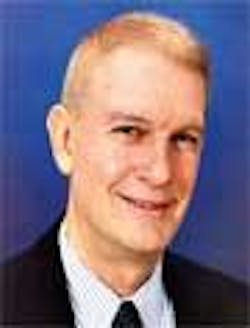What triggers inflammation?
by Bill Landers
[email protected]
The average human has between 10 and 50 trillion cells … and vastly more bacteria ... somewhere between 100 trillion to 1 quadrillion! From a bacterium's point of view, people are just big warm hotels with convenient room service. We don't yet know just how many different species of bacteria are living on us and in us. The number of oral species, for instance, climbs every year, with the current estimate somewhere between 500 to 600 species.
Of course, all species aren't present at the same time. Some species form cooperative biofilms, while others are fierce competitors. At any given time, as few as 10 species can account for half of the total biomass. Somehow the immune system is able to distinguish the bad guys from the good guys. How does it do that?
Remember LPS (lipopolysaccharide) from your hygiene textbooks? It's the stuff that cell walls are made from. Decades ago, researchers thought inflammation had something to do with LPS because when they broke down plaque and analyzed the little bits and pieces, about the only things they found were DNA, proteins made from amino acids, and LPS.
They knew DNA couldn't trigger inflammation because there's no DNA outside the cell. It also couldn't be the amino acids because every cell, including body cells, is made from amino acids. So they concluded it must the other stuff, the LPS that makes up bacterial membranes (bacteria don't have cell walls). LPS gets its name from its components. It's basically a double layer of fat molecules (lipids) mixed with many (poly) sugar molecules (saccharides). Hence LipoPolySaccharide.
Inflammation causes most of the damage in periodontal disease. It is typically very low grade, but continuous, 24 hours a day, month after month. The problem with the LPS theory is that it said live bacteria triggered inflammation and dead bacteria didn't, even though both have LPS. So what's different about the LPS in living vs. dead bacteria? None could be found. LPS is LPS.
Even more mysterious, how does the immune system know when to turn on and off? How does it know whether a pathogenic bacterium is alive or dead?
As it turns out, it isn't the LPS after all. With the advent of more sophisticated tools, researchers have discovered a new class of proteins called peptides. They missed them before because peptides only exist in living cells. While peptides may sound exotic, they're just short chains of the same amino acids found in proteins, linked together with very weak “peptide” bonds. Amino acids are electrically neutral. With no net charge, they can't form strong ionic or covalent bonds where atoms give up or share electrons. However, one end of an amino acid (the amine end that gives amino acids their name) (NH3) has more hydrogen atoms and thus slightly more of a negative charge than the other (carboxyl COOH) end, which has more oxygen atoms and just the tiniest bit of a positive charge. When the amine end of one amino acid meets the carboxyl end of another, they give up a water molecule and stick weakly together.
Add water however, which happens when the cell dies, and the peptide bonds break and all that's left again are amino acids.
The impermeable LPS that makes up bacterial membranes is studded with peptides that act like gates. The peptide channels control the transport of molecules in and out of the cells. Like a lock and key system, T-cells (a type of white blood cell) can identify the different types of peptides on cell surfaces. Once locked onto a peptide, it's the T-cells that activate the rest of the immune system.
The really clever part of this mechanism is that it's self regulating. When the pathogens die, the peptides become amino acids again. With no more peptides, there's nothing for the T-cell to latch on to and inflammation subsides. So peptides are the key to the inflammation puzzle.
About the Author
Bill Landers has been president of OraTec Corp. since 1992. He is also a leading expert on chairside and laboratory periodontal risk assessment technologies, and his essays on periodontal disease have been published in several dental hygiene journals. Landers is a popular speaker and has presented hundreds of continuing education seminars on the microbiology of periodontal diseases.

